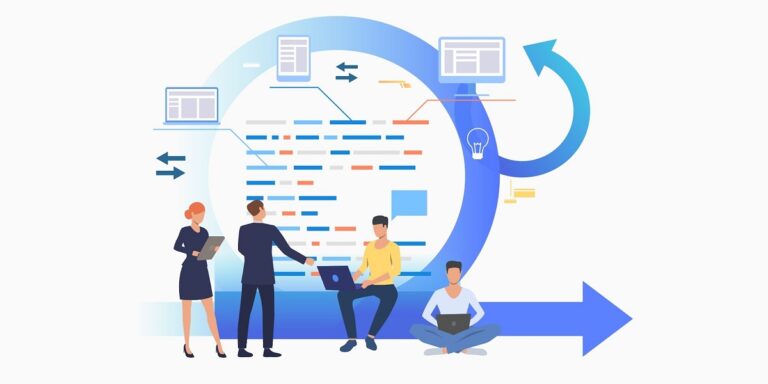Web development has come a long way in the last few years as Microsoft and other companies have continually developed new methods of developing web applications faster, with higher security standards, and greater accessibility across multiple platforms and devices. This has forced developers to seek out updated skills so they can continue to grow in their careers while contributing to increasing the functionality of the internet and web-connected services.
As a business owner, it’s important to understand that choosing which platform your application will be created on can have a huge impact down the road. Luckily, hiring a good developer for your project doesn’t have to break your bank account—in fact, you can hire software developers remotely from places like Elance or Upwork for as little as $10/hour! If you want to learn more about outsourcing development but don’t know where to start, check out our Ultimate Guide To Hiring An Independent Developer eBook – it’s filled with insider tips that every entrepreneur should know when building their team!
Difference Between ASP.NET Web API and ASP.NET Core?
Design Principles
One of my favorite aspects of working on .NET at Microsoft is design principles. They’re basically a list of values that guide us in making certain decisions when we’re building new APIs, frameworks, and tools for .NET developers.
For example, a design principle for writing web APIs states: Always use hypermedia as the engine of application state or HATEOAS for short (pronounced heed-ee-oh-ass).
Why does it matter? As you can see in our definition below, it lets clients interact with services without requiring them to know about any other resources besides those explicitly provided by the service itself. This makes interactions with clients agnostic because they don’t need to understand what they aren’t being told.
Routing
While you still have control over all routing, most of your mapping will now be done using simple mappings that map strings directly to controllers, HTTP methods, and action names. This makes it a lot easier to change things quickly, without having to mess around with modifying route configuration files or code.
The result is much more readable routes, making it a lot easier for you or others to understand how they work just by looking at them without having to run through route configurations in your head. You also have a new MVC-like format (codice_1) for easy consumption by tools such as Swagger or any other client app built on top of that format. That means less maintenance for us too!
Authentication/Authorization
You can use form authentication or you can create your own custom authorization logic, but I recommend sticking with what comes in the box when creating a new project: cookie-based authentication + membership providers. For example, there’s no reason to reinvent something like identity management; if you need to manage identity in some way that isn’t done for you, hire a developer with experience doing so for production systems.
Hosting Options
You have a few hosting options to choose from depending on what your web app needs: Microsoft Azure, AWS, or Heroku are all good starting points to host your web app. For those who want more control of their development environment, it’s possible to host using Docker containers, which lets you keep your application separate from any system dependencies so you can move your code anywhere without losing functionality (provided there’s an image for your language/framework in Docker Hub). It also means that if you find one of these services lacking at some point down the road, you can simply spin up another instance with a different hosting provider if needed.
Consumption Models
Developers are often tasked with choosing between hiring a programmer or buying software from Microsoft (or another vendor). This decision can sometimes be hard because there are pros and cons to each route. . When you hire a dot net developer, you have access to someone who knows your product inside and out, who can solve problems quickly, and who gets paid only when they’re working.
Where does MVC fit in with all this?
Model-View-Controller (MVC) is a pattern for developing web applications that separate an application into three logical pieces: data, presentation, and business logic.
MVC started as a way to enable a greater separation of concerns within a monolithic web application in order to improve maintainability, extensibility, and testability; it was later superseded by single-page apps like AngularJS and EmberJS (among others), which emphasized dynamic data binding over local state management.
Although Web API supports other architectural patterns like MVC, it emphasizes RESTful design principles over more modern alternatives—and because of that reliance on simpler HTTP verbs, it’s considered much easier to develop than its newer counterparts.
Conclusion
You’ll notice there’s no clear-cut answer here to what’s better? This is an important lesson to learn, as you’ll encounter similar scenarios in development: two competing technologies that both serve a purpose, but don’t quite line up against each other.
Developers often end up choosing whichever solution works best for them—and it can change over time based on project constraints. There’s no simple answer because development usually isn’t so cut-and-dry; rather, it comes down to picking what works best for each individual team member at any given time with a particular set of constraints and requirements.


0 Comments